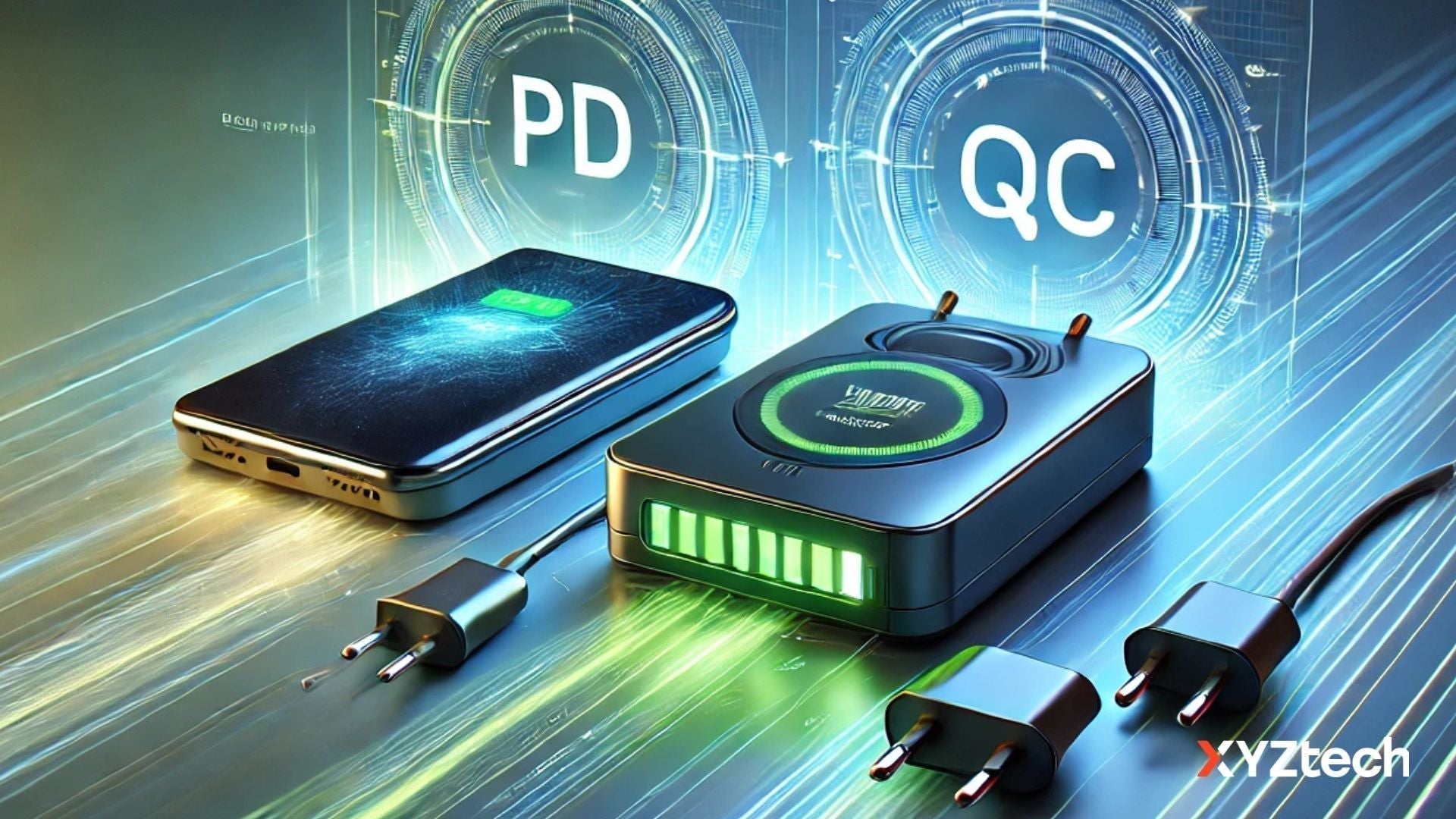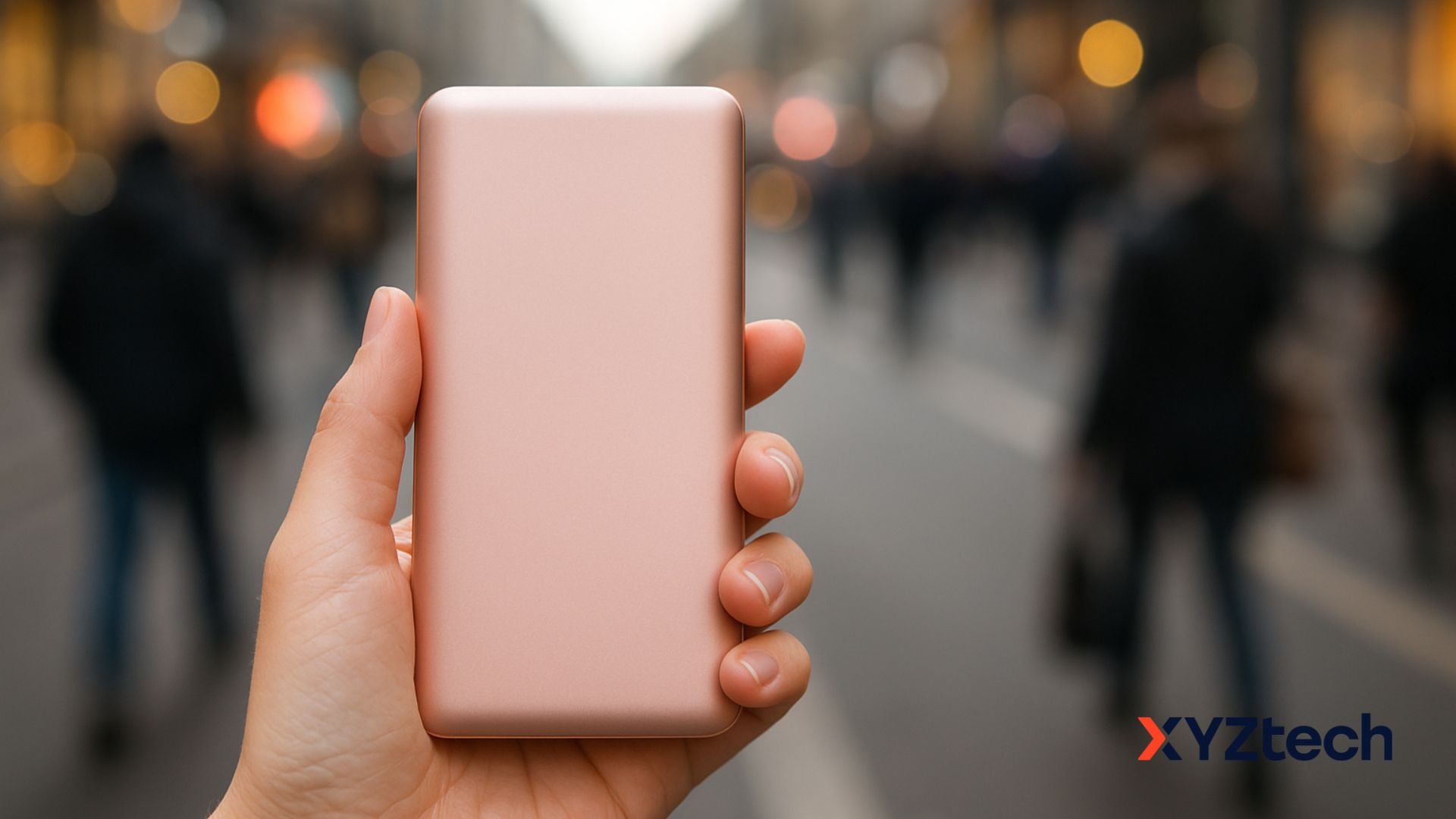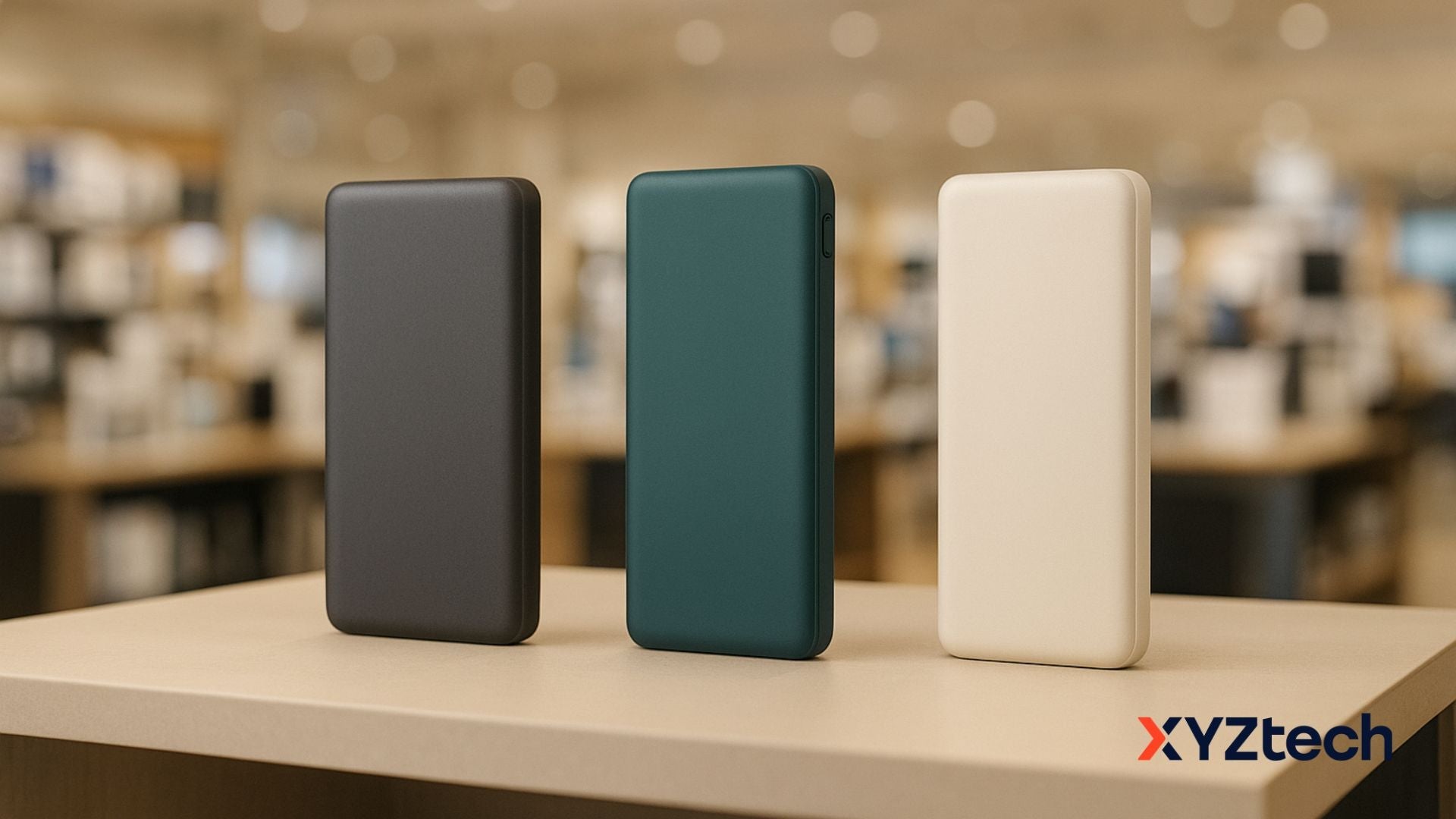PD vs. QC Charging: How They Differ and Which One's Better?

When shopping for a charger, you may encounter the labels PD (Power Delivery) and QC (Quick Charge), which indicate fast charging capabilities. Understanding the differences between PD vs. QC charging is important to ensure you choose the right charger for your devices. Let’s break it down to help you make the best choice.
In this article:
- How They Work and What They Offer
- PD vs. QC Charging Quick Comparison
- QC vs. PD Charging Pros and Cons
- Which One is Best for You?
Let’s get started!
PD vs. QC Charging: How They Work and What They Offer
Let’s start by breaking down the basics of QC (Quick Charge) and PD (Power Delivery). Let’s compare how QC vs. PD charging works, how fast they charge, what devices they’re compatible with, and what makes each unique. This will help you see the differences and choose the one that works best for you.
What is QC (Quick Charge)?
Qualcomm Quick Charge (QC) is a fast-charging tech designed by Qualcomm to pump more power into your devices compared to standard USB charging. It's a go-to feature for many Android devices, tablets, and power banks powered by Qualcomm processors. Over the years, QC has leveled up, with Quick Charge 5 being the latest and greatest—delivering up to 100W of power for super-fast charging.
Key Features of QC:
- Enhanced Speed: Quick Charge is known for its fast speeds. For instance, QC 5 can charge some devices up to 50% in just five minutes, depending on the device and battery capacity. However, earlier QC versions may not achieve the same speed.
- Intelligent Charging: QC includes built-in protections like regulating power to prevent overheating, overcharging, or damage to the battery, ensuring efficient and safe charging.
- Backward Compatibility: Newer QC chargers work with older QC-enabled devices, but the charging speed will depend on the device's QC version. For example, a QC 2.0 device won't charge as fast on a QC 4+ charger because it's limited by its technology.
QC Versions:
- QC 1.0 (2013): The first version of Quick Charge, offering faster charging than standard USB chargers. It provided up to 10W of power, but it was limited to a fixed voltage of 5V.
- QC 2.0 (2014): This version introduced adjustable voltage (5V, 9V, and 12V), allowing more flexibility and faster charging up to 18W. Devices could negotiate the best voltage for efficient power delivery.
- QC 3.0 (2016): This version charges your device up to four times faster than a regular charger. It uses smart technology called Intelligent Negotiation for Optimum Voltage (INOV) to deliver just the right amount of power, keeping the process efficient and safe.
- QC 4.0 (2017): This version brought even faster charging with a focus on better efficiency and safety. It introduced USB Power Delivery (PD) compatibility and reduced heat during charging, but the 4+ version quickly surpassed it.
- QC 4+ (2020): A newer version that combines the best of Quick Charge (QC) and Power Delivery (PD). This means it can work with more types of devices, not just those designed specifically for QC.
-
QC 5.0 (2020): The latest and most advanced version. It supports over 100 watts of power for ultra-fast charging. It keeps your device up to 10°C cooler during charging. It can charge a battery from 0% to 50% in just five minutes, depending on your device.
What is PD (Power Delivery)?
Power Delivery (PD) is like the universal language of fast charging for USB-C devices. It works with a variety of brands, including Apple and Android, making it super versatile. With the ability to deliver up to 100W of power, PD can handle everything from your smartphone to tablets, laptops, and even some gaming consoles.
Key Features of PD:
- Higher Power Output: PD chargers can deliver up to 100 watts of power, making them suitable for everything from smartphones to laptops.
- Bi-Directional Charging: PD allows your device to not only receive power but also send it—great for charging smaller devices like earbuds or smartwatches.
- Multi-Device Charging: Many PD chargers have multiple ports, letting you charge several devices at once.
PD Versions:
- USB PD 1.0 (2012): The first version, offering basic power profiles with fixed voltages (5V, 9V, 15V, 20V) and up to 100W power delivery. It started making charging faster but was limited.
- USB PD 2.0 (2014): Expanded support to various USB interfaces (Type-A, Type-B, and Type-C) and made it possible for devices to communicate and adjust power more flexibly.
- USB PD 3.0 (2017): Focused on USB Type-C only, introducing Programmable Power Supply (PPS). This allows devices to adjust power in real-time for more efficient charging, especially for newer devices.
- USB PD 3.1 (2021): Added higher voltage options (28V, 36V, 48V) for even more power (up to 240W). This version is ideal for charging bigger devices like laptops.
PD vs. QC Charging Quick Comparison
To help clarify which technology best suits your needs, here's a quick PD vs. QC charging comparison:
|
Feature |
Power Delivery (PD) |
Quick Charge (QC) |
|---|---|---|
|
Technology Provider |
Developed by USB Implementers Forum (USB-IF) |
Developed by Qualcomm |
|
Compatibility |
Universal, works with phones, tablets, laptops, and more |
Primarily for Qualcomm-powered Android devices |
|
Voltage & Current |
Voltages: 5V, 9V, 12V, 15V, 20V; Current: Up to 5A |
Voltages: 5V, 9V, 12V; Current: Typically 1A or 2A |
|
Maximum Power |
Up to 240W |
Up to 100W |
|
Charging Speed |
Power delivery up to 100W (adapts based on device needs) |
Up to 18W (less flexible compared to PD) |
|
Device Compatibility |
Works with most USB-C devices, including smartphones, laptops, and other electronics |
Primarily optimized for Qualcomm Snapdragon-powered devices |
|
Ports |
USB-C (often multi-port) |
USB-A and USB-C (backward compatibility with older QC) |
|
Bi-directional Charging |
Yes, can charge devices and accessories (e.g., earbuds from a laptop) |
No, designed primarily for charging devices |
|
Multi-device Charging |
Yes, supports multiple devices at once |
Generally used for single-device charging |
|
Universal Standard |
Yes, supports all USB-C devices |
Limited to devices with Qualcomm Quick Charge support |
|
Safety Features |
Overvoltage, overcurrent protection, temperature control |
Overvoltage and overcurrent protection |
PD offers broader (universal) compatibility and higher power output, making it a more versatile and future-ready choice.
QC vs. PD Charging Key Differences Explained
-
Voltage & Current:
- PD supports higher voltages (5V, 9V, 12V, 15V, 20V) and can deliver up to 5A current, allowing for 100W charging. This is ideal for larger devices, such as laptops and high-power electronics.
-
QC typically supports voltages of 5V, 9V, and 12V and provides 1A or 2A current. This is optimized for smartphones and other smaller devices, with charging speeds up to 18W for most QC versions.
-
Charging Speed:
- PD offers a faster overall charging speed for larger devices (e.g., laptops) thanks to its ability to deliver 100W of power. This makes PD a versatile option for users who need to charge more power-hungry devices quickly.
- QC, on the other hand, is optimized for smartphones (especially Qualcomm-powered ones), offering fast charging speeds, especially with the latest QC 4.0+ and QC 5 versions, but generally topping out around 18W.
-
Device Compatibility:
- PD is the more universal standard, supported by a broad range of devices, including smartphones, tablets, laptops, and even some gaming consoles. It works with USB-C devices, making it future-proof.
- QC is designed for Qualcomm Snapdragon-powered devices (primarily Android phones). While it offers backward compatibility and works with other devices at standard speeds, it’s not as versatile as PD.
QC vs. PD Charging Pros and Cons
Here’s a breakdown of QC vs. PD charging technologies’ pros and cons:
|
Feature |
Pros |
Cons |
|---|---|---|
|
PD (Power Delivery) |
- Universal compatibility with phones, laptops, and more. - Higher power output (up to 100W), ideal for larger devices - Bi-directional charging (i.e., charge accessories from a laptop) - Future-proof with USB-C standard |
- Requires USB-C ports; may not work with older devices - Not optimized for Qualcomm devices, slower charging for these. |
|
QC (Quick Charge) |
- Optimized for Qualcomm devices, providing fast charging - Backward compatibility with older QC versions - Affordable and widely available, especially for Android phones |
- Limited compatibility with non-Qualcomm devices - Charging for larger devices (like laptops) is slower compared to PD - Primarily uses USB-A and USB-C, which may be less convenient for newer devices |
PD vs. QC Charging—Which One is Best for You?
When choosing between PD vs. QC charging, it really depends on what devices you have and what you need from your charger.
Key Takeaways:
- PD is super versatile—it works with everything from smartphones to laptops and even gaming consoles! With its higher power output and bi-directional charging, it’s perfect for anyone looking for a flexible, future-proof option.
- QC is designed with Qualcomm-powered devices in mind, offering fast charging speeds, especially for smartphones, and it’s backward compatible with older devices. However, it’s not as universally compatible as PD.
If you want a charger that works with a variety of devices and can handle more power-hungry electronics, PD is your best bet. But if you’re mostly using Qualcomm-powered Android devices and want super fast charging for those, QC might be the way to go. Both technologies have their perks, so just think about what you need and which one works best for your devices!
Frequently Asked Questions
Does the iPhone use PD or QC?
iPhones rely on the Power Delivery (PD) charging standard rather than Qualcomm’s Quick Charge (QC). While QC was the pioneer in fast charging for Android phones, PD has been adopted more recently by both Apple and Google, offering efficient charging for a variety of devices.
Does fast charging damage the battery?
Fast charging does not significantly harm battery health. Studies have shown that fast charging has a minimal effect on the capacity or lifespan of a battery, whether in electric vehicles or smartphones. While some concerns exist, no major link between fast charging and long-term degradation has been found.
What is the meaning of PD 20W?
PD stands for Power Delivery, which is a technology that enables faster charging. The 20W part means the charger can supply up to 20 watts of power to your device, making it charge faster than regular chargers. For example, a standard iPhone charger is 5W, which is much slower. But a 20W PD charger can charge your phone up to 4 times faster.
Related Articles
What Is a PD Charger? How It Works & Why It’s Worth It
What Is Fast Charging? Pros, Cons, and Impact on Battery Life
Does USB-C Charge Faster? Learn Why and What Factors Affect It




